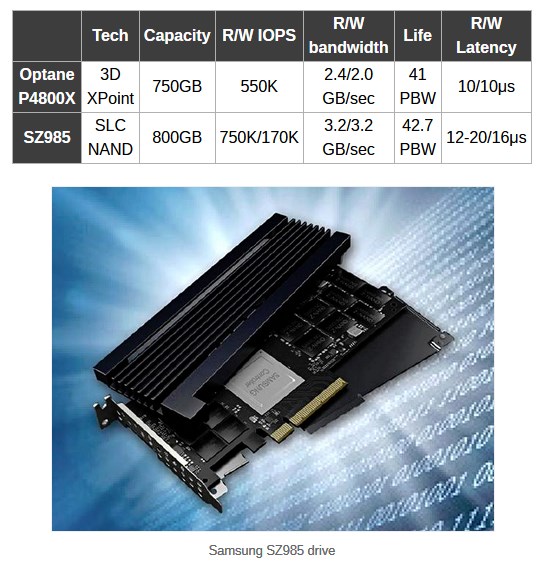
The Register compared the specifications of the Intel Optane P4800X and the Samsung SZ985. The conclusion is that Z-NAND narrows the gap significantly. While regular NVMe SSDs have read/write latency of 110-120?s, the new Z-NAND is capable of achieving 12-20/16?s. It's still not as fast as the 10?s delivered by Optane, but it's getting pretty close.
The Samsung drive has a higher random read IOPS rating than the P4800X, but it has an even larger advantage in random write IOPS, which is emphasised in the sequential read/write bandwidth numbers where it is two and a half to three times better.

Z-NAND is believed to be tweaked SLC NAND with a customized controller to speed things up. In the end, a lot will probably depend on how both solutions are priced. If Samsung can significantly undercut Optane in terms of pricing, it could put a brake on Optane's growth potential. Furthermore, Z-NAND may also be able to scale capacity faster than Optane.